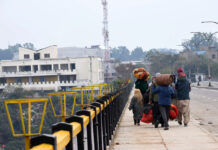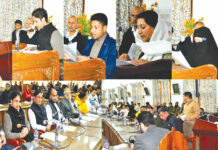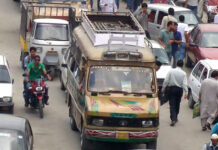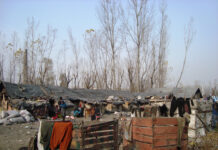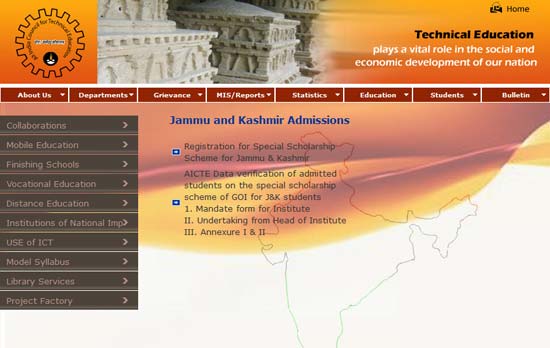The CRPF has removed16 bunkers from city as a Unified Command measure to ease off tensions in the city, but with around 400 bunkers still standing the move may hardly change the visibility of the troops on ground. Peerzada Shabir reports.
The bunkers made up of “piled up sand bags” became a common sight in Kashmir in 1989 after armed struggle broke out for “freedom” from India. Making the valley look like a battlefield and these bunkers created an aura of fear. Of late some of bunkers have been removed from Srinagar city, however, the bunkers causing are still there.
There are around 1600 bunkers of army, police and paramilitary troopers established during last two decades to fight armed militants, across the valley. A total of 406 security bunkers are in Srinagar city only.
Srinagar city also know as city of bunkers is having more than 80 living bunkers and almost all of them have been turned into concrete structures. These bunkers are located on road sides and near vital installations. Srinagar city, police maintains is having more than 400 bunkers, that including living, mobile (vehicle bunkers) and camp bunkers (Bunkers in and outside the camps).
The transformation of sandbag bunkers into concrete structures was not an overnight change but it occurred in a phased manner. When the Central Reserve Police Force (CRPF) took over from Border Security Force (BSF), the sandbag bunkers were given a wooden makeover with hut-like facade. The CRPF termed the makeover as a “beautification drive” to make the security arrangements presentable before the tourists. However, within a year, cemented structures replaced them.
 The living bunkers, located on roads is not less than a comfortable room. The troopers deployed in the living bunker do not move to company headquarters or battalion headquarters after the duty shift. The bunker includes a kitchen, wash room and bedding. Not less than a troop column of 12 remain in bunker around the clock.
The living bunkers, located on roads is not less than a comfortable room. The troopers deployed in the living bunker do not move to company headquarters or battalion headquarters after the duty shift. The bunker includes a kitchen, wash room and bedding. Not less than a troop column of 12 remain in bunker around the clock.
Another type of bunker, known as Camp bunkers are located outside the headquarters of troop battalions and companies however, a trooper after his shift moves to company or battalion headquarters from these bunkers. Then there are mobile bunkers. The mobile bunkers can be erected anywhere at any time. The mobile bunkers include the Casper vehicles of army, small Casper vehicle of police and paramilitary forces. J&K police’s elite wing uses mobile bunkers extensively.
The living bunkers established in Srinagar city have proved fruitful especially during the 2008 Amaranth land row and the ongoing unrest. The Closed Circuit TV (CCTV) cameras fitted in these bunkers clicked the youth engaging in stone pelting. The CCTV footage helped police to arrest hundreds of youth. The CCTV’s are also fitted at the entrance of vital installations.
Srinagar is having more than 80 living bunkers and almost all of them have been turned into concrete structures. Police maintains there are more than 400 bunkers in Srinagar. However, CRPF claims that in entire Central Kashmir, (Srinagar, Budgam and Ganderbal), the number of living bunkers is less than 50.
Out of more than 400 bunkers across Srinagar few were brought down in last two days but the troopers stationed in these bunkers would not move outside the state. This is the key part of much hyped eight point package of center to state.
Many here feel that dismantling a few bunkers was conceived as smokescreen for evading the people’s demand of demilitarization and removal Armed Forces Special Powers Act (AFSPA).
The list of bunkers that have to be removed did not include such bunkers in Srinagar city that remained the cause of conflict between the residents and the paramilitary forces. The list also did not include the bunker located in city hub Lal Chowk known as Pladium Cinema Bunker. The shopkeepers in Lal Chowk observed strike and government constituted committee to look into their demand of removing the bunker.
The shopkeepers called off their strike only after the junior minister Nasir Aslam Wani assured them that bunker will be removed after three months.
While CRPF says that its 21 battalions are operating in Central Kashmir, police maintains that the number of CRPF battalions operating in Srinagar alone at 14. “First of all 14 battalions need 14 living bunkers and some living bunkers for companies. How the number of living bunkers in Central Kashmir would be less than 50,” said a senior police officer. “The number of living bunkers in Srinagar city would not be less than 80,” he adds.
In the past two years, the officials of Srinagar Municipal Corporation state that 50 such concrete structures have popped up on the city streets.
Since 2004 when the CRPF started replacing the BSF here and elsewhere in the Valley, the former is busy cementing its edifice. SMC officials say the concrete bunkers are “illegal constructions just worth a demolition drive.”
A senior SMC official said that no one is allowed to construct concrete structures on roads. “It’s simply illegal and no permission can ever be granted,” he said and added that despite repeated requests, the CRPF has failed to remove the encroachments.
Till now, the only time when authorities swung to action was in mid 2007 when a concrete structure was being constructed at Naaz Crossing. The then District Development Commissioner Srinagar Aijaz Iqbal reportedly rushed to the spot with his demolition team including dozers to prevent encroachment on the busy road connecting major parts of the suburb and airport with the city center.


